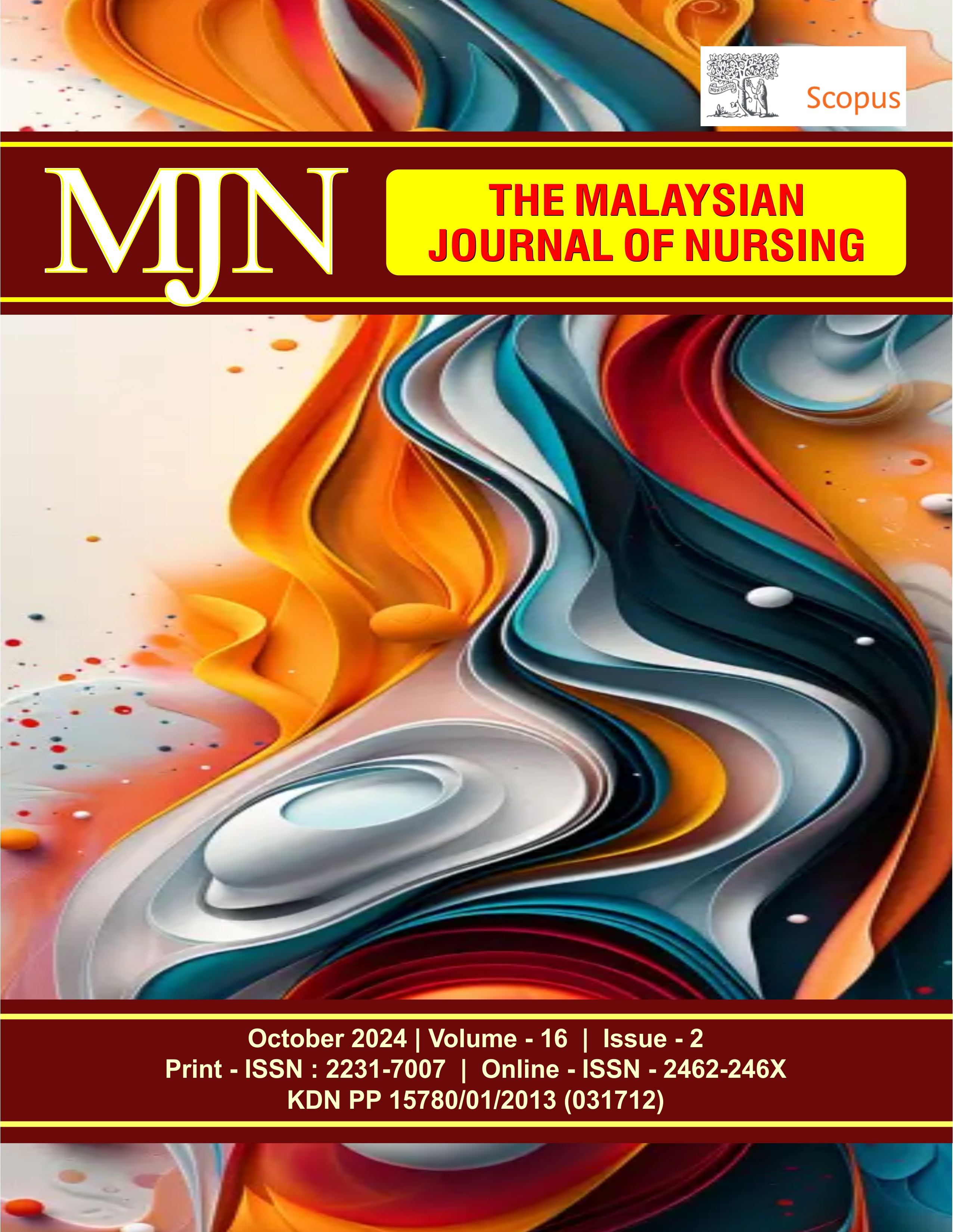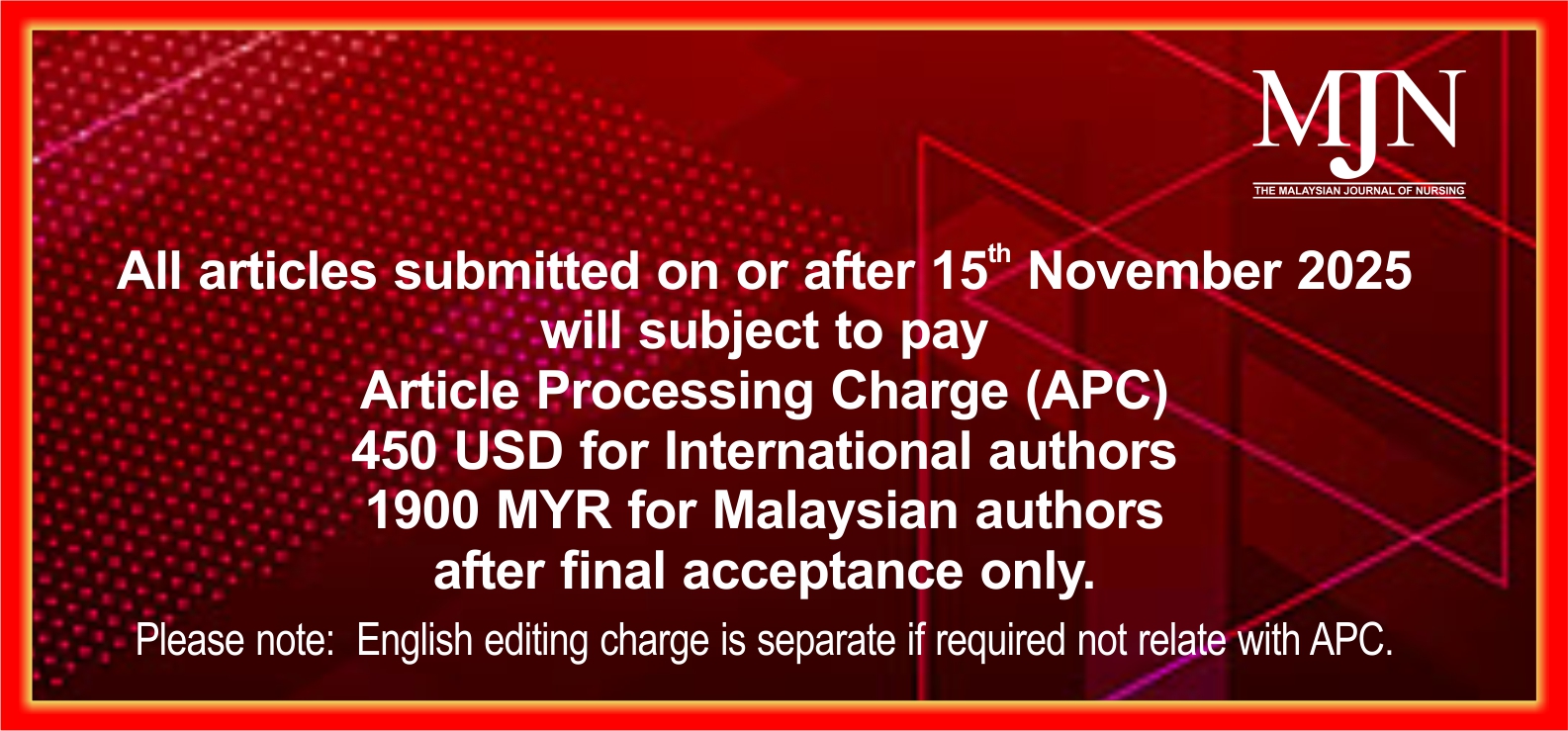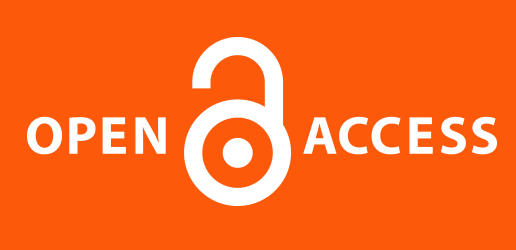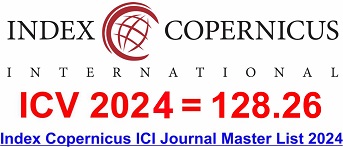Impact of Shot Blocker on Alleviating Peripheral Intravenous Cannulation Associated Pain among School-Aged Children: A Randomized Controlled Trial
DOI:
https://doi.org/10.31674/mjn.2024.v16i02.008Abstract
Background: The aim of this research is to examine the effectiveness of ShotBlocker in reducing pain to enhance school-age patients' experience with intravenous cannulation. Nurses need to explore non-pharmacological approaches during intravenous cannulation to pain management while adhering to ethical and legal principles. Objective: To investigate effectiveness of ShotBlocker and ShotBlocker placebo in reducing pain during intravenous cannulation in school age children’s patients. Methods: A Randomized Controlled Trial (RCT) that is comparative and prospective, was used. The study was conducted on 228 school age children’s patients (6-12 years) who undergo intravenous cannulation in Emergency Departments (EDs). Three groups of patients were randomly assigned: ShotBlocker group (n=79), ShotBlocker placebo group (n=75), and control group (n=74). The patients were requested to evaluate the level of pain immediately following Peripheral Intravenous Line (PIV) procedure using the Wong–Baker Faces Pain Scale. Results: This study showed P-value=0.000 indicated that there are statistically significant differences in pain intensity among the ShotBlocker, ShotBlocker placebo, and control groups. In comparison to both the ShotBlocker placebo and control group, the ShotBlocker group’s pain intensity was significantly reduced (mean difference 1.74684). Furthermore, there were higher pain levels noted in the ShotBlocker placebo (mean difference 8.50667) and control group (mean difference 8.757). Conclusions: When compared the ShotBlocker group with ShotBlocker placebo and control groups, the study discovered that the ShotBlocker use was effective in minimizing the levels of pain associated with the intravenous cannulation.
Keywords:
Intravenous Cannulation, Nurses, Pain Management, ShotblockerDownloads
References
Alnfeai, A. K. M., & Alqahtani, R. S. A. (2023). Evaluation of nurses' practice related to injection safety. Journal of Survey in Fisheries Sciences, 10(6), 20-22. https://doi.org/10.53555/sfs.v10i6.2253
Al-Saadi, S. F., Moonaghi, H. K., Sadeq, A. F., & Bakhshi, M. (2022). Effect of near-infrared vein finder technology on success rate of cannulation in obese diabetic patients. Shiraz E-Medical Journal, 23(7). https://doi.org/10.5812/semj-120908
Alvarez-Morales, L., Gómez-Urquiza, J. L., Suleiman-Martos, N., Membrive-Jiménez, M. J., González-Díaz, A., Pérez, R. G., & Liñán-Gonzalez, A. (2024). Ultrasound-guided peripheral intravenous canulation by emergency nurses: A systematic review and meta-analysis. International Emergency Nursing, 73. https://doi.org/10.1016/j.ienj.2024.101422
Aydin, E., & Avşar, G. (2019). Examining the effect of “Shotblocker” in relieving pain associated with intramuscular injection. Complementary Therapies in Medicine, 47. https://doi.org/10.1016/j.ctim.2019.09.001
Bachi, G. E., & AL-Fayyadh, S. (2022). Determination of procedural pain intensity among critically ill patients: Using Behavioral Pain Scale (BPS). Journal of Contemporary Medical Sciences, 8(4). https://doi.org/10.22317/jcms.v8i4.1260
Beneta, V. (2023). Effectiveness of squeezing ball technique on reduction of pain during insertion of intravenous cannulation amongst hospitalised toddlers in a selected hospital, Kolar. Indian Journal of Continuing Nursing Education, 24(2), 162-167. https://doi.org/10.4103/ijcn.ijcn_13_23
Bilge, S., Aydin, A., Gun, C., Aldinc, H., Acar, Y. A., Yaylaci, S., ... & Balci, V. (2019). Comparison of the efficacy of ShotBlocker and cold spray in reducing intramuscular injection-related pain in adults: A prospective, randomized, controlled trial. Saudi Medical Journal, 40(10). https://doi.org/10.15537/smj.2019.10.24322
Caglar, S., Büyükyilmaz, F., Cosansu, G., & Çaglayan, S. (2017). Effectiveness of ShotBlocker for immunization pain in full-term neonates: a randomized controlled trial. The Journal of Perinatal & Neonatal Nursing, 31(2), 166-171. https://doi.org/10.1097/JPN.0000000000000256
Dadoosh, K. A., & Sadeq, A. F. (2022). Hospitalized patients' satisfaction with nursing care quality: A neurological Wards Focused Assessment. Kufa Journal for Nursing Sciences, 12(2), 31-40. https://doi.org/10.36321/kjns.vi20222.9438
de Alencar, I. G. M., dos Santos Dantas, J. K., de Araújo, S. C. M., de Lima Fernandes, T. E., de Araújo, P. L. O., da Costa, A. B., ... & de Oliveira, J. S. A. (2024). Non-pharmacological therapies for pain management in paediatric intensive care units: A protocol for a scoping review. BMJ Open, 14(2). https://doi.org/10.1136/bmjopen-2023-074952
EL-mahdy, E. S. R., El-khedr, S. M., Elrifaey, S. M., & Elaraby, M. E. (2023). Effect of Shot blockers versus buzzy bee distractor on relieving pain and anxiety level during insulin injection among children with type I diabetes. Tanta Scientific Nursing Journal, 29(2), 32-49. https://doi.org/10.21608/tsnj.2023.298374
Evison, H., Carrington, M., Keijzers, G., Marsh, N. M., Sweeny, A. L., Byrnes, J., ... & Ranse, J. (2022). Peripheral intravenous cannulation decision-making in emergency settings: A qualitative descriptive study. BMJ Open, 12(3). https://doi.org/10.1136/bmjopen-2021-054927
Fahd, M. M., & Shawq, A. H. (2023). The Effects of Planned Program on Nurses' Practices for Intramuscular Injection Among Pediatric. Pakistan Heart Journal, 56(2), 530-536. https://www.pkheartjournal.com/index.php/journal/article/view/1409/1366. Accessed on 20th December, 2023.
Gautam, S., Mall, P., Prakash, R., Yadav, K., Raman, R., & Singh, M. K. (2024). Efficacy of ShotBlocker device versus vapocoolant spray for spinal needle pain relief during spinal anaesthesia in elective caesarean section-A randomised controlled trial. Indian Journal of Anaesthesia, 68(4), 329-333. https://doi.org/10.4103/ija.ija_845_23
Ghasemi, M., Hoseinialiabadi, P., Yazdanpanah, F., Mahani, M. A., Malekyan, L., Najafi, K., ... & Ranjbar, H. (2022). Comparison of music and vapocoolant spray in reducing the pain of venous cannulation in children age 6-12: a randomized clinical trial. BMC Pediatrics, 22(1). https://doi.org/10.1186/s12887-022-03271-9
Gilbertson, C. J., Rasekaba, T., & Blackberry, I. (2023). Exploring the feasibility of using virtual reality as a non-pharmacological intervention to alleviate patient fear of needles during medical treatment: A study protocol. Journal of Perioperative Nursing, 36(3), e12-e18. https://doi.org/10.26550/2209-1092.1268
Girgin, B. A., Göl, İ., Gözen, D., Çarikçi, F., & Kirmizibekmez, H. (2023). Effects of applications manual pressure and shotblocker to reduce needle-related pain and fear in children with type 1 diabetes mellitus. Journal of Pediatric Nursing, 73, 84-90. https://doi.org/10.1016/j.pedn.2023.08.024
Gürdap, Z., & Cengiz, Z. (2022). Comparison of cold spray and shotblocker to reduce intramuscular injection pain: A randomized controlled trial. Journal of Clinical Pharmacy and Therapeutics, 47(8), 1249-1256. https://doi.org/10.1111/jcpt.13663
Hafez, D. M. E., & Ali, W. G. M. (2023). ShotBlocker versus cryotherapy for reducing pain and anxiety associated with subcutaneous injection. Frontiers of Nursing, 10(3), 363-371. https://doi.org/10.2478/fon-2023-0039
Hao, H., Ramli, R., Wang, C., Liu, C., Shah, S., Mullen, P., ... & Du, X. (2023). Dorsal root ganglia control nociceptive input to the central nervous system. PLoS Biology, 21(1). https://doi.org/10.1371/journal.pbio.3001958
Hariton, E., & Locascio, J. J. (2018). Randomised controlled trials—the gold standard for effectiveness research. BJOG: An International Journal of Obstetrics and Gynaecology, 125(13). https://doi.org/10.1111/1471-0528.15199
Heitler, B. (2023). Primary afferent depolarization and the gate control theory of pain: A Tutorial Simulation. Journal of Undergraduate Neuroscience Education, 22(1). https://doi.org/10.59390%2FPWFC1224
Kadhum, K. J., & Bakey, S. J. (2023). Evaluation Nurses’ Practices During Intravenous Canulation for Children in the Emergency Units. Mosul Journal of Nursing, 11(1), 16-21. https://doi.org/10.33899/mjn.2023.176930
Kaplan, A., Güler, S., & Avşaroğulları, Ö. L. (2023). Comparison of manual pressure and shotblocker on pain and satisfaction in intramuscular injection: A randomized controlled trial. Sağlık Bilimleri Dergisi, 32(1), 89-96. https://doi.org/10.34108/eujhs.1123965
Karabey, T., & Karagözoğlu, Ş. (2024). The effect of new device on pain and comfort levels in individuals undergoing peripheral intravenous cannula insertion. The Journal of Vascular Access, 25(2), 432-438. https://doi.org/10.1177/11297298221113685
Karaca, T. N., & Guner, U. C. (2022). The effect of music-moving toys to reduce fear and anxiety in preschool children undergoing intravenous insertion in a pediatric emergency department: a randomized clinical trial. Journal of Emergency Nursing, 48(1), 32-44. https://doi.org/10.1016/j.jen.2021.10.004
Lim, C. Y., & In, J. (2019). Randomization in clinical studies. Korean Journal of Anesthesiology, 72(3), 221-232. https://doi.org/10.4097/kja.19049
Lindbeck, G., Shah, M. I., Braithwaite, S., Powell, J. R., Panchal, A. R., Browne, L. R., ... & Warth, M. (2023). Evidence-based guidelines for prehospital pain management: recommendations. Prehospital Emergency Care, 27(2), 144-153. https://doi.org/10.1080/10903127.2021.2018073
Liu, C., Chen, L., Kong, D., Lyu, F., Luan, L., & Yang, L. (2022). Incidence, risk factors and medical cost of peripheral intravenous catheter-related complications in hospitalised adult patients. The Journal of Vascular Access, 23(1), 57-66. https://doi.org/10.1177/1129729820978124
Lurie, F., Malgor, R. D., Carman, T., Dean, S. M., Iafrati, M. D., Khilnani, N. M., ... & Gasparis, A. P. (2022). The American Venous Forum, American Vein and Lymphatic Society and the Society for Vascular Medicine expert opinion consensus on lymphedema diagnosis and treatment. Phlebology, 37(4), 252-266. https://doi.org/10.1177/02683555211053532
Mendes, B. V., Furlan, M. D. S., & Sanches, M. B. (2022). Non-pharmacological interventions in painful needle procedures in children: integrative review. Brazilian Journal of Pain (BrJP), 5, 61-67. https://doi.org/10.5935/2595-0118.20220004
Moustgaard, H., Clayton, G. L., Jones, H. E., Boutron, I., Jørgensen, L., Laursen, D. R. T., Olsen, M. F., Paludan-Müller, A., Ravaud, P., Savović, J., Sterne, J. A. C., Higgins, J. P. T., & Hróbjartsson, A. (2020). Impact of blinding on estimated treatment effects in randomised clinical trials: meta-epidemiological study. BMJ (Clinical research ed.), 368, l6802. https://doi.org/10.1136/bmj.l6802
Oommen, S., & Shetty, A. (2024). Does parental anxiety affect children’s perception of pain during intravenous cannulation?. Nursing Children and Young People, 36(4). https://doi.org/10.7748/ncyp.2019.e1187
Şahan, S., & Yildiz, A. (2022). The effect of shotblocker application on intramuscular injection pain in adults: A meta-analysis. Clinical Nursing Research, 31(5), 820-825. https://doi.org/10.1177/10547738211021225
Saltaji, H., Armijo-Olivo, S., Cummings, G. G., Amin, M., da Costa, B. R., & Flores-Mir, C. (2018). Influence of blinding on treatment effect size estimate in randomized controlled trials of oral health interventions. BMC Medical Research Methodology, 18, 1-18. https://doi.org/10.1186/s12874-018-0491-0
Sedat, B., Attila, A., Cem, G., Hasan, A., Acar, Y. A., Serpil, Y., ... & Veysel, B. (2019). Comparison of the efficacy of ShotBlocker and cold spray in reducing intramuscular injection-related pain in adults. Saudi Medical Journal, 40(10), 996-1002. https://doi.org/10.15537/smj.2019.10.24322
Shaikh, N., Chanda, A., Ganaw, A., Sameer, M., Hassan, J., Farooqi, M. W., & Haji, M. M. A. (2022). Vascular Access: From Cannulation to Decannulation. In Improving Anesthesia Technical Staff’s Skills (pp. 171-195). Cham: Springer International Publishing, Germany https://doi.org/10.1007/978-3-030-88849-7_12
Sharp, R., Muncaster, M., Baring, C. L., Manos, J., Kleidon, T. M., & Ullman, A. J. (2023). The parent, child and young person experience of difficult venous access and recommendations for clinical practice: A qualitative descriptive study. Journal of Clinical Nursing, 32(17-18), 6690-6705. https://doi.org/10.1111/jocn.16759
Silva, E., Pereira, M. F., Vieira, J. T., Ferreira‐Coimbra, J., Henriques, M., & Rodrigues, N. F. (2023). Predicting hospital emergency department visits accurately: A systematic review. The International Journal of Health Planning and Management, 38(4), 904-917. https://doi.org/10.1002/hpm.3629
Suleman, S. K., Atrushi, A., & Enskär, K. (2022). Effectiveness of art-based distraction in reducing pain and anxiety of hospitalized children during cannulation procedure: A randomized controlled trial. Belitung Nursing Journal, 8(3). https://doi.org/10.33546/bnj.2054
Svendsen, E. J., & Bjørk, I. T. (2021). Health care provider’s responses to children’s resistance to peripheral vein cannulation: A qualitative observational study. Journal of Clinical Nursing, 30(9-10), 1325-1334. https://doi.org/10.1111/jocn.15681
Ullman, A. J., Kleidon, T. M., Gibson, V., Takashima, M., Schults, J., Cattanach, P., ... & Rickard, C. (2023). Experiences of children with central venous access devices: a mixed-methods study. Pediatric Research, 93(1), 160-167. https://doi.org/10.1038/s41390-022-02054-3
Uma, B., & Clement, I. (2020). Gate Control Theory of Pain. IDC International Journal, 7(3), 54-7. http://doi.org/10.47211/idcij.2020.v07i03.014
van der Straaten, T. F., Rieffe, C., Soede, W., Netten, A. P., Dirks, E., Oudesluys-Murphy, A. M., ... & DECIBEL Collaborative Study Group. (2020). Quality of life of children with hearing loss in special and mainstream education: A longitudinal study. International Journal of Pediatric Otorhinolaryngology, 128. https://doi.org/10.1016/j.ijporl.2019.109701
Xu, H., Keogh, S., Ullman, A. J., Marsh, N., Tobiano, G., Rickard, C. M., ... & Griffin, B. (2023). Implementation frameworks, strategies and outcomes used in peripheral intravenous catheter studies: A systematic review. Journal of Clinical Nursing, 32(17-18), 6706-6722. https://doi.org/10.1111/jocn.16671
Yildirim, D., & Dinçer, B. (2021). Shotblocker use in emergency care: a randomized clinical trial. Advanced Emergency Nursing Journal, 43(1), 39-47. https://doi.org/10.1097/TME.0000000000000330
Yu, Z., Zhou, Y., Xu, X., Lin, L., Le, Q., & Gu, Y. (2023). Pharmacological and non-pharmacological interventions in management of peripheral venipuncture-related pain: A randomized clinical trial. BMC Pediatrics, 23(1). https://doi.org/10.1186/s12887-023-03855-z
Published
How to Cite
Issue
Section
License
Copyright (c) 2024 The Malaysian Journal of Nursing (MJN)

This work is licensed under a Creative Commons Attribution-NonCommercial-NoDerivatives 4.0 International License.



































